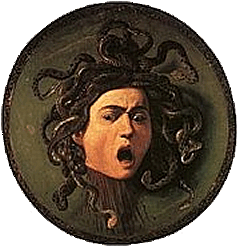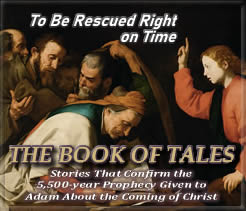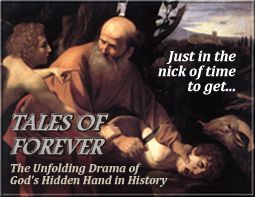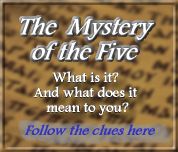The Medusa Mystery
A New View of the Hidden Meaning of Symbols
What is the real meaning behind the Head of Medusa? And does this mean that this is a pagan website dedicated to anti-biblical truth? To the contrary, this site is unabashedly dedicated to the God of The Bible, a God Whom the Scriptures declare is a God Who goes to great lengths to not only reveal His truths but also to hide them. Therefore, the central premise of this website is that the pursuit of biblical truth is always a search for hidden meaning, a quest for truth that is literally hidden in plain sight. In other words, truth is always a riddle to be unraveled, an enigma to be apprehended, a mystery to be solved.
This is never more the case than when we’re confronted with iconic images like the Head of Medusa. While most people assume it’s a pagan image, produced by a heathen mind, when examined in light of a biblical perspective, it actually becomes a gateway to a dramatic proof of God’s control and faithfulness as much as any other proof in more traditional terms of biblical theology.
In his groundbreaking work The Common Background of Greek and Hebrew Civilizations, Cyrus H. Gordon demonstrated how Egypt provided the seedbed for not only the Hebraic culture that made their Exodus under Moses but also the Grecian culture, which originated as the result of much earlier migration that took place along another route unbeknownst to most people. According to the purposes of God, this was a journey that was specifically intended to remain a hidden mission and one whose true nature would only be revealed in the course of prophetic time at some future date, for the sake of some future generation.
Story Continues Below
Says Richard Price—the founder and CEO of Academia.edu—on his podcast In Depth With Academia:
Tales of Forever: The Unfolding Drama of God’s Hidden Hand in History is:
To hear Price’s book review of Tales of Forever, CLICK HERE.
To hear Kent, Zen Garcia and S. Douglas Woodward as they continue their discussion concerning the implications of the 5,500-year prophecy spoken of in the various apocryphal sources and confirmed via the chronology of The Septuagint, CLICK BELOW.
Story Continues From Above
To that end, then, biblically speaking, “in the fullness of time” not only refers to the perfect timing displayed in the Advent of Christ, but it also refers to that time when, upon the completion of the days of the scattering and punishing of the rebellious Houses of Israel and Judah, the real meaning of God’s purpose in scattering them throughout the nations would finally come to light in the eyes of an onlooking world.
To the discerning, this is what began in the late nineteenth century when the then-new science of archeology burst upon the scene with the pioneering work of Johann Winckelmann and Heinrich Schliemann, whose vision and determination penetrated the prevailing veil of myth and fable. For Schliemann, the words of the ancient Greek poet Homer were not mere myth but represented potential fact. So, when he, in defiance of more “rational” minds, achieved the impossible by digging up the historical lost city of Troy, a brand-new way of thinking was ushered in. Thanks to the birth of this radical new approach to history, called archeology, what was once considered merely mythological was suddenly thrown into a new light. Suddenly, the myth of Homer took on the flesh and blood of actual history. (To read more about this, see Dawn of a New Age: The Unlikely Birth of a Science.)
Next came the discoveries of the Behistun Inscription and the Rosetta Stone and with them a new chapter of biblical history was unveiled. Together, these startling finds provided the key to unlock the door to help solve the ages-long mystery of the identities of that most famous of all “missing persons” case in human history. Into which part of the world did The Lost Tribes of Israel disappear? According to more than one hundred years of study, facilitated by the work of men like Henry Rawlinson, Austen Henry Layard, and Jean-François Champollion, it was determined that after the end of the Assyrian captivity of the eighth century B.C. the remnant of the House of Israel migrated northward through the Caucasus Mountains where they became known by a series of new names such as Scythians, Cimmerians, and later still, Saxons. With that fresh awareness came the next wave of understanding the full extent of God’s control over history and His faithfulness to His word of promise as they pertained to the descendants of Abraham.
So the question remains: What has any of this got to do with the real meaning of the Head of Medusa?
In the case of Medusa, what we’re dealing with, when seen afresh, is not a mere product of pagan culture but is instead—according to the more adept theologians of our time like Gordon—a religious symbol produced by a culture that is a direct descendant of the relocated House of Judah through the kingly line of his royal son, Zarah, the twin brother of Pharez, whose strange births are described in the 38th chapter of The Book of Genesis. As such, what we’re actually looking at in this famous image of Medusa, with snakes for hair and the power to turn whoever gazes upon her into stone, is none other than a direct descendant of the prophetic stream which produced the strange, exotic imagery of the various books of Revelation, Daniel, and Enoch, all of which convey their sacred imagery by way of a bewildering array of animalistic totems.







